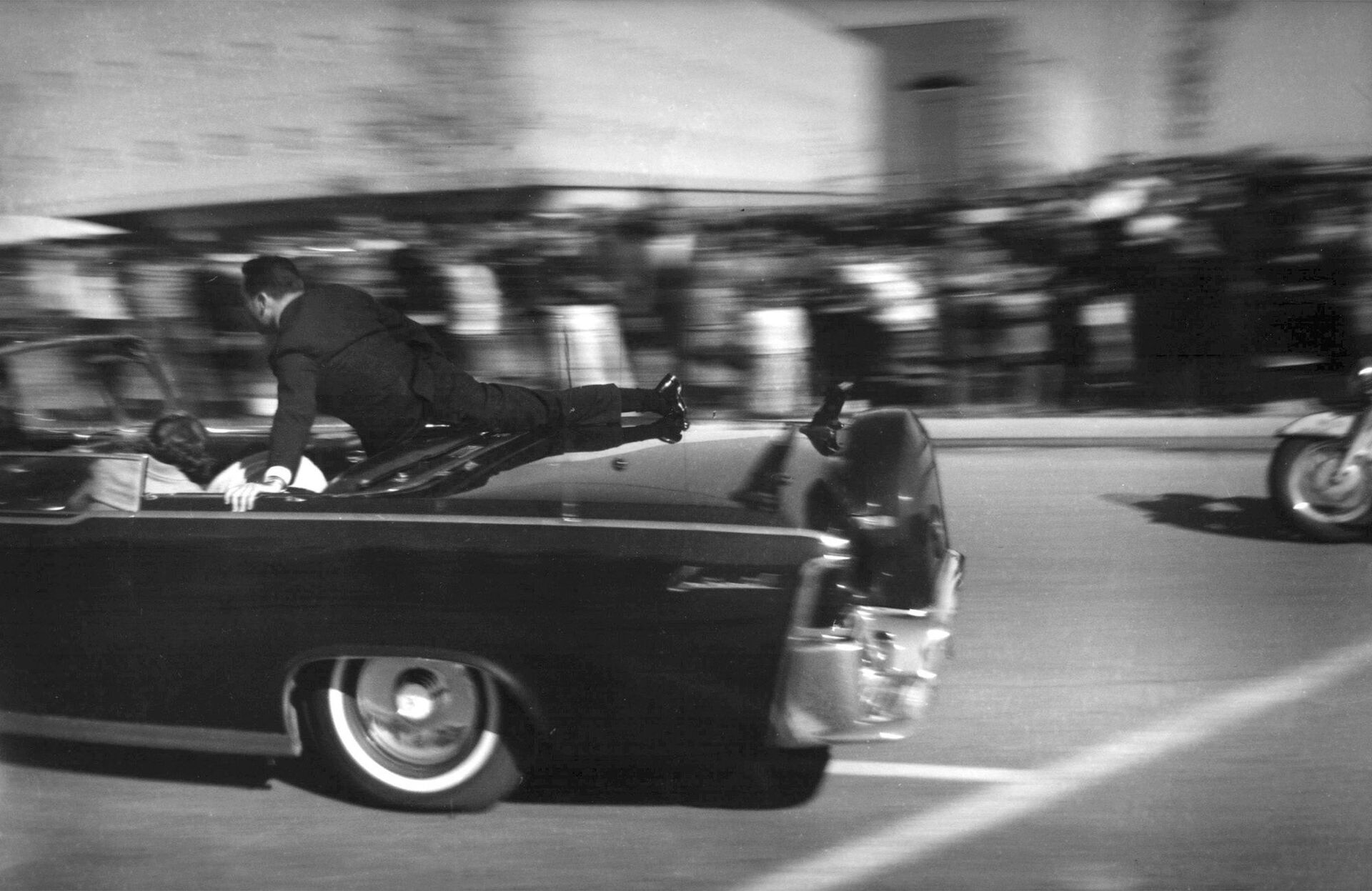Secret Service Agent Raises Questions About JFK 'Magic Bullet' Assassination Theory
04:04 GMT 12.09.2023 (Updated: 04:05 GMT 12.09.2023)

© AP Photo / Anonymous
Subscribe
Sixty years ago, the one US Secret Service agent was just feet away when he experienced a moment that would forever change history. In the years since, the assassination of US President John F. Kennedy has raised a series of questions and sparked various conspiracies.
A former US Secret Service agent who was present when President John F. Kennedy was assassinated in Dallas, Texas, is now challenging a crucial theory put forward by the Warren Commission, which investigated the 1963 killing of the then-commander-in-chief.
The new revelations are being made on the heels of the agent's upcoming book, “The Final Witness: A Kennedy Secret Service Agent Breaks His Silence After Sixty Years.”
Paul Landis, who is 88, was given the task of protecting first lady Jackie Kennedy during the two-day, five-city tour of Texas when he was a young agent; however, he was just feet away when the sound of three gun fires rang out on November 22, 1963.
The first struck Kennedy in his throat, which would have been a serious but non-fatal strike. It was the second, or third shot that struck Kennedy’s skull, and resulted in his untimely death. Landis not only remembers hearing these shots, but he also recalled having to duck down so as to avoid being covered in the president’s brain tissue.
The “magic bullet” theory was put forward by the Warren Commission a year after the president’s death. It is believed that one of the bullets struck and exited the president before injuring then-Texas Governor John Connally Jr. in his back, chest, wrist and thigh. This theory was believed in part because the bullet was found on a stretcher thought to have been used in Connally’s aid.
In the chaotic moments following the assassination, Landis says he recalls picking up a near-pristine bullet from the back seat of the presidential limousine, behind where Kennedy had been sitting. He then took the bullet so as to avoid it becoming lost to theft, and took it to the Parkland Memorial Hospital where Kennedy died, and placed it on his stretcher so it could be examined.
“There was nobody there to secure the scene, and that was a big, big bother to me,” Landis said. “All the agents that were there were focused on the president.”
“This was all going on so quickly. And I was just afraid that — it was a piece of evidence, that I realized right away. Very important. And I didn’t want it to disappear or get lost. So it was, ‘Paul, you’ve got to make a decision,’ and I grabbed it.’”
At some point, he believes the stretchers were pushed together, and the bullet was somehow shaken onto the stretcher.
Landis has theorized the bullet struck Kennedy in the back, but that it may have been undercharged and therefore popped back out of his body when he was removed from the limousine.
People have also questioned whether or not Lee Harvey Oswald—who was believed to be a lone actor in the president’s assassination—really acted alone. Landis has believed it too, but now he’s not so sure.
“At this point, I’m beginning to doubt myself,” he said. “Now I begin to wonder.”

FILE - In this Nov. 22, 1963 file photo, the limousine carrying mortally wounded President John F. Kennedy races toward the hospital seconds after he was shot in Dallas. Secret Service agent Clinton Hill is riding on the back of the car, Nellie Connally, wife of Texas Gov. John Connally, bends over her wounded husband, and first lady Jacqueline Kennedy leans over the president. The National Archives has until Oct. 26, 2017, to disclose the remaining files related to Kennedy's assassination, unless President Donald Trump intervenes.
© AP Photo / Justin Newman
The former agent has shared his personal accounts with key figures associated with the assassination, including Lewis C. Merletti, a former director of the Secret Service, and James Robenalt, a Cleveland lawyer and author of several books of history.
“If what he says is true, which I tend to believe, it is likely to reopen the question of a second shooter, if not even more,” Robenalt said, according to the New York paper that interviewed Landis. “If the bullet we know as the magic or pristine bullet stopped in President Kennedy’s back, it means that the central thesis of the Warren Report, the single-bullet theory, is wrong.”
Robenalt adds that if Connally was indeed hit by a second bullet, and there is no “magic bullet,” then it would not have been possible for Oswald to reload his gun quickly enough to cause those separate injuries.
Merletti, however, is unsure Landis’ account. “I don’t know if that story’s true or not, but I do know that the agents that were there that day, they were tormented for years by what happened," he said.
The report that Landis had filed following the assassination included mistakes, he said. He had been in shock and had not been able to sleep following the incident, and therefore did not think to mention his account of finding the bullet.


